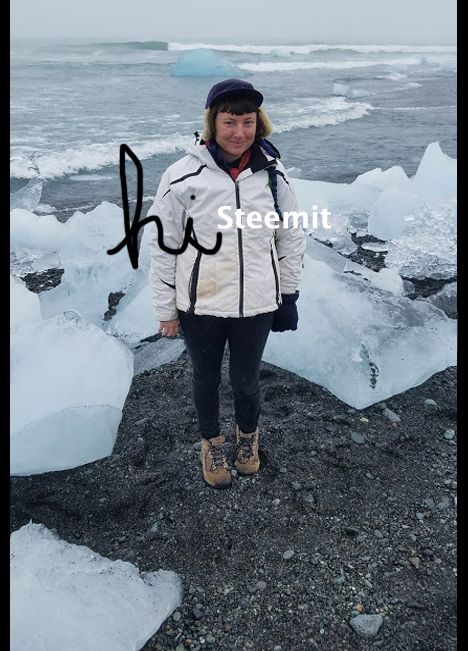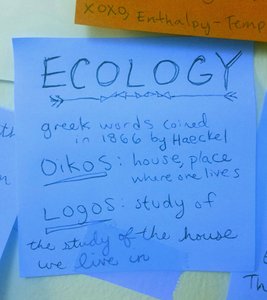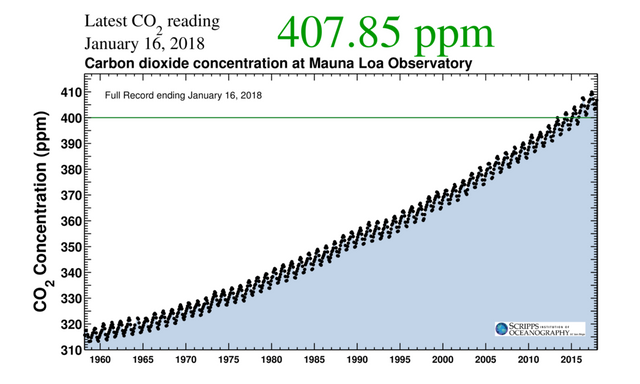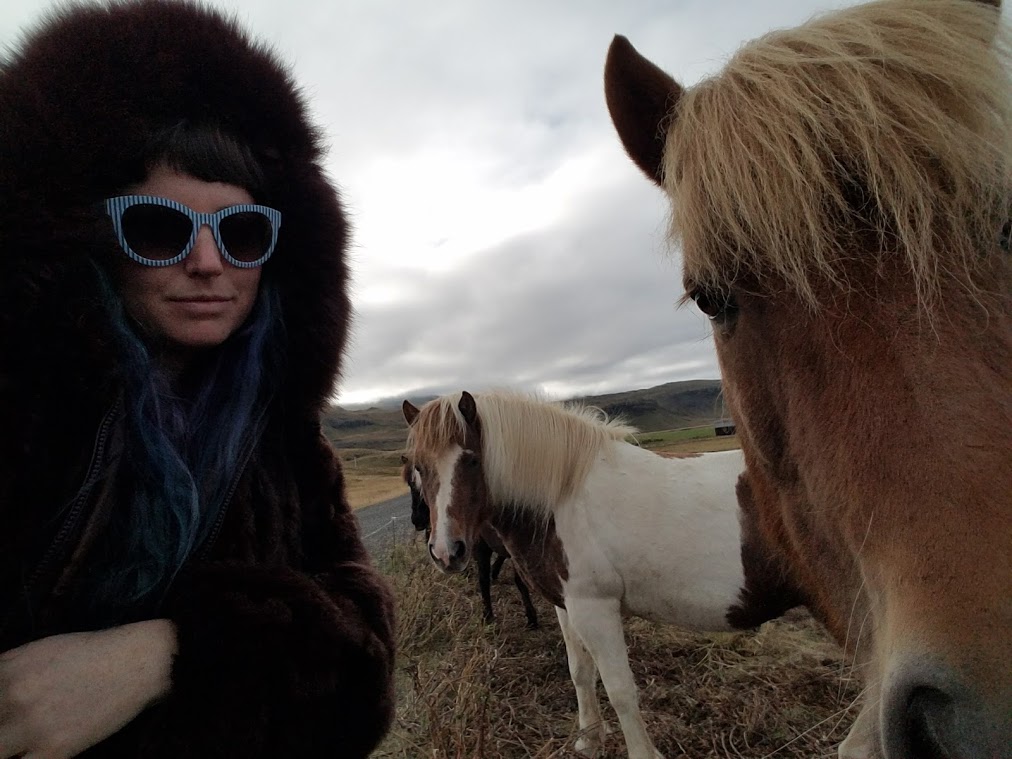Hi Steemit! and Happy New Year :)
After the holidays in sunny California, I am back in the winter wonderland that is ICELAND. Sending you all greetings from Diamond Beach. A beautiful black sands beach strewn with sparking icy boulders.

I'm rolling into my second semester of grad school at the University of Iceland, and I wanted to share with you bit of what I'm learning.
DQmTuVkwRB2mmYkbLscUiLkdfykAN9UTakmWbBNQkwPUYLg/26972207_1969405556635393_1984266764_o.jpg)
It describes the amount of light energy autotrophs (aka plants) convert to chemical energy and how that energy is allocated within the organism. Primary Production is defined as total amount of organic matter or biomass produced by autotrophs.
It is expressed Gross Primary Production (GPP) referring to all the carbohydrates and sugars plant makes during photosynthesis. Ecologists measure the Net Primary Production (NPP) of resulting from primary production. NPP accounts for all organic matter (biomass) left after a plant performs cellular respiration (R).
On land, this process is carried out through photosynthesis in plants. Primary production determines the energy budget for entire ecosystems and dictates the energy flow through the trophic levels.
Plants reside at the bottom trophic level and define the base level of ecosystem productivity. The energy they store is lost as it transfers to higher trophic levels. With more efficient or abundant primary producers, there can be more energy to support higher trophic levels such as secondary and tertiary consumers. GO PLANTS!
Environmental factors limit primary production on a global as well as a local level. These limitations for terrestrial biomes include temperature and precipitation (and to some degree nutrients availability). The measure of precipitation (or moisture) and temperature is calculated at an annual measure of actual evapotranspiration (AET). Terrestrial biomes with high AET have warm, moist climates and tend to have the highest rates of primary productivity.
Some nutrient limits (in N and P) will impact primary production. For example, tropical rainforests are nutrient poor due to high levels of rain and more K-selected species, but temperate grasslands are nutrient rich because r-selected plants add organic matter and nutrients to soil.
***I will discuss r versus K selected species in another post.
So why is primary production so important in our changing climate? We have learned that primary production is responsible for the entire energy budget of the ecosystem. And global climate change impacts all species interaction, threatening ecosystem biodiversity.
How do we quantify climate change and it's impact on primary producers? We can measure the rising levels of atmospheric CO2. The amount of CO2 in our atmosphere spiked post industrial revolution and continues an exponential climb soaring up to today's measure of over 400 parts per millions. This rise in CO2 levels is caused by human disruption of natural cycles as we convert lands into agricultural production, apply chemical fertilizer and contribute massive amounts of greenhouse gases to the atmosphere. The Mauna Loa curve or Keeling Curve documents the rising CO2 concentrations:

(Scripps Institution of Oceanography, 2018)
Rising CO2 levels impact primary producers in different ways. There are physiological effects on plants at elevated CO2 levels such as rate of photosynthesis and water efficiency use (WEU). These changes impact a plant’s carbon budget affect the available energy for consumers.
As primary producers alter allocation patterns in different ways, there will be changes in competitive interactions between species. As CO2 rises, temperature rises along with it and precipitation patterns change. Because temperature and moisture are two major limiting factors for primary producers, the global distributions of plants and their ability to perform will be greatly impacted.
This brings me to Iceland. The Arctic region is especially susceptible to these environmental changes. As the Arctic transitions from carbon sink to carbon source (Oechel et al. 1993), Arctic ecosystems are faced with local extinctions. Arctic plants have evolved to survive in the harsh tundra, but as temperatures change and distributions shift, foreign species migrating north are armed to colonize the now suitable arctic habitat. Evidence for global change impacting plant distribution is seen by the northward movement of the tree line (Blaud et al., 2015).
The state of these primary producers impacts the distribution of the animals dependent on them as well as the microbial community they support. The arctic plant communities and their corresponding microbial communities will affect biogeochemical cycles, further impacting environmental changes.
Well shoot, what do we do now?
Step 1: Educate ourselves on why this is happening
Step 2: Evaluate our priorities as a species
Step 3: Take measures to prevent the collapse of these ecosystems and all the cool creatures that call them home!

References and Good Reads:
Blaud, A., et al. (2015). Arctic soil microbial diversity in a changing world. Research in Microbiology 166(10): 796-813.
Graves, Jonathan and Reavey, Duncan (1996). Global Environmental Change: Plants, Animals & Communities. Longman Group Limited, London.
Molles, Manuel C. (2012). Ecology Concepts and Applications: Fifth Edition. McGraw Hill Education, University of New Mexico.
Oechel W. C., Hastings S. J., Vourlitis G, Jenkins, M., Reichers G., Grulke N. (1993). Recent change of Arctic tundra ecosystems from a net carbon dioxide sink to source. Nature 361, 520-3.
You received a 10.0% upvote since you are not yet a member of geopolis.
To read more about us and what we do, click here.
https://steemit.com/geopolis/@geopolis/geopolis-the-community-for-global-sciences-update-1
If you do not want us to upvote and comment on your posts concerning earth and earth sciences, please reply stop to this comment and we will no longer bother you with our love ❤️
Downvoting a post can decrease pending rewards and make it less visible. Common reasons:
Submit